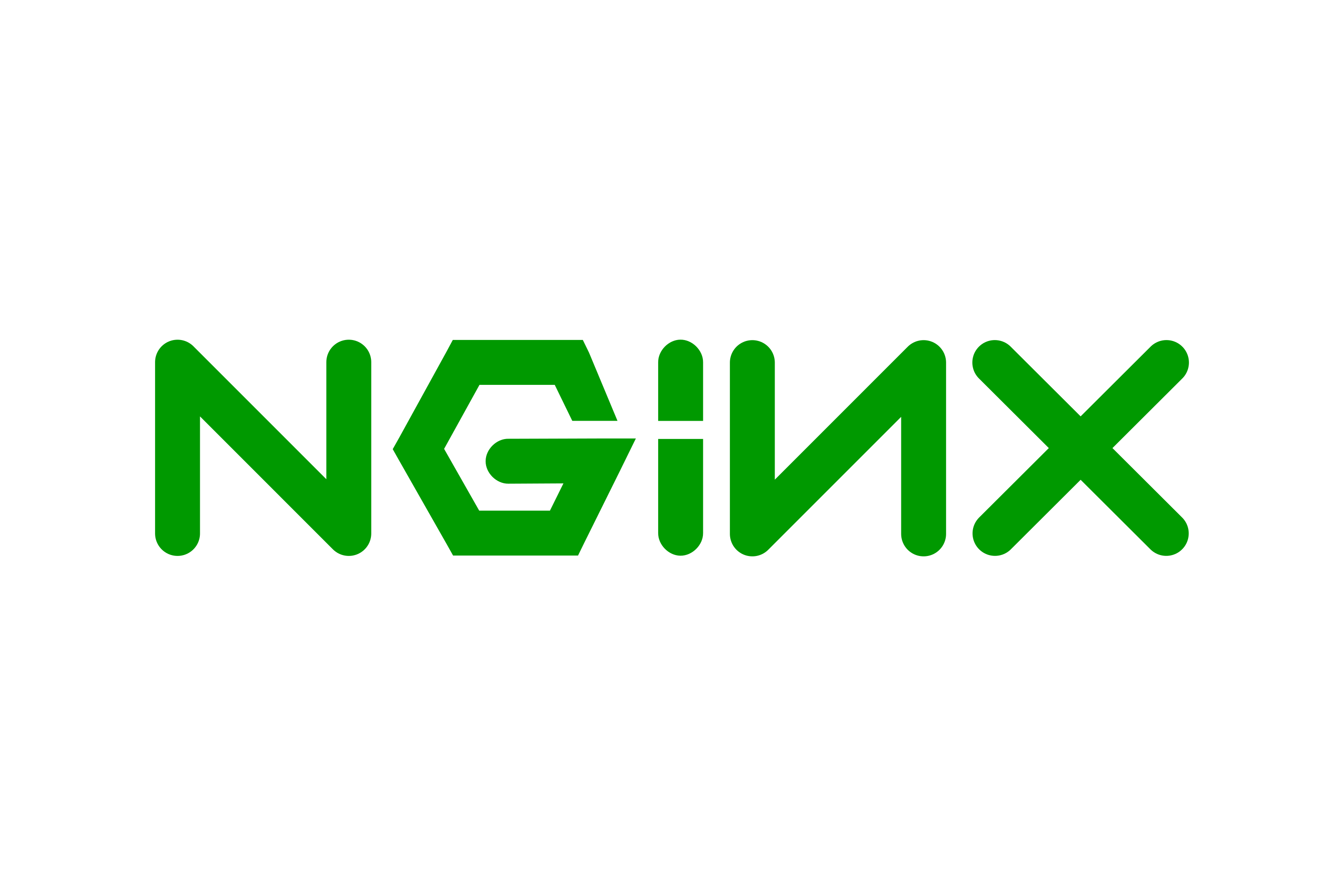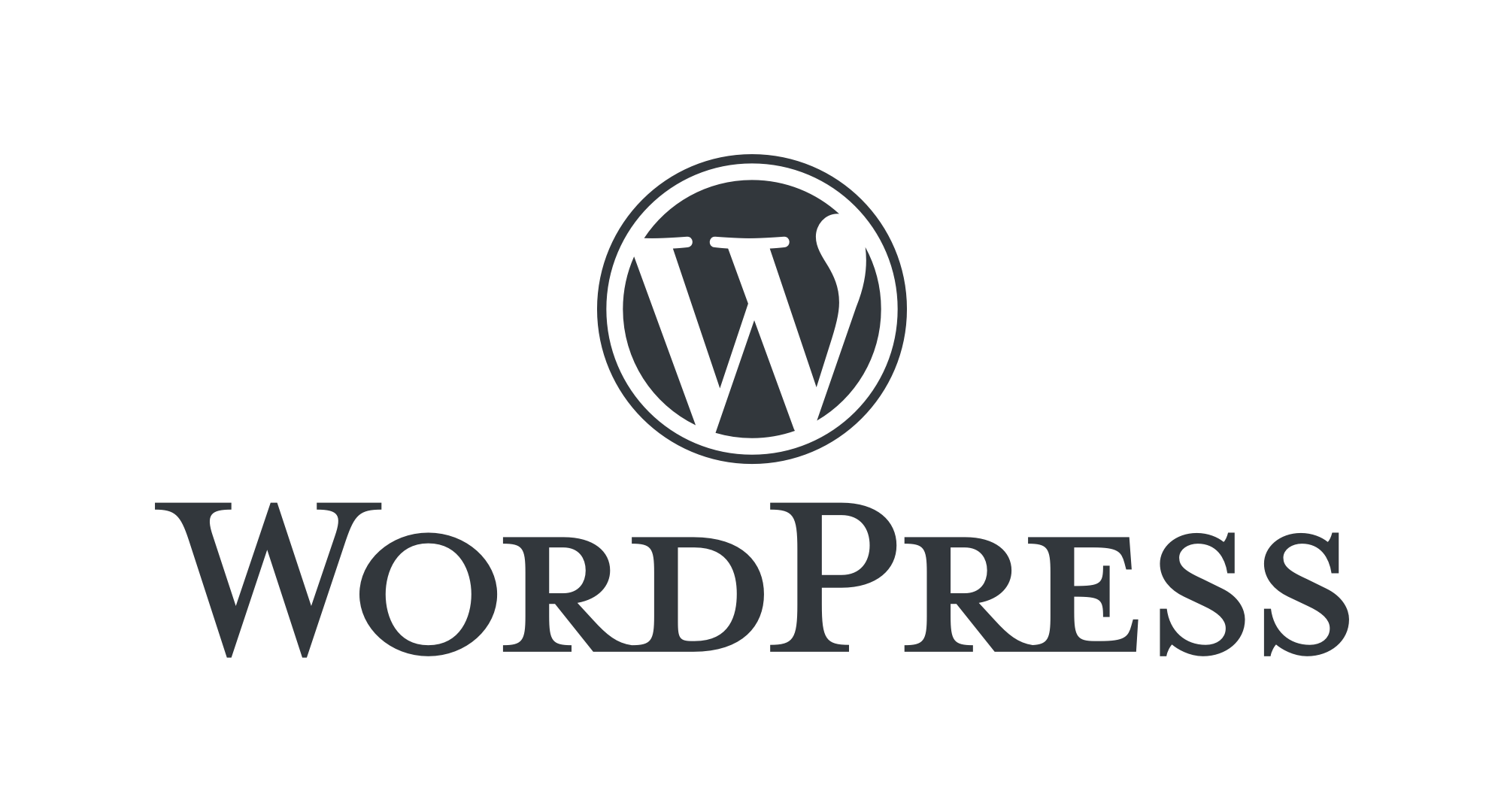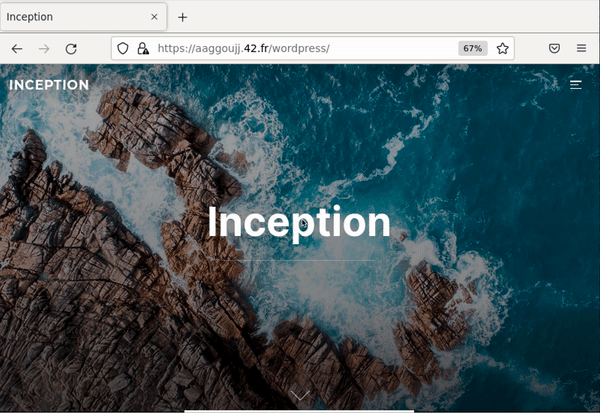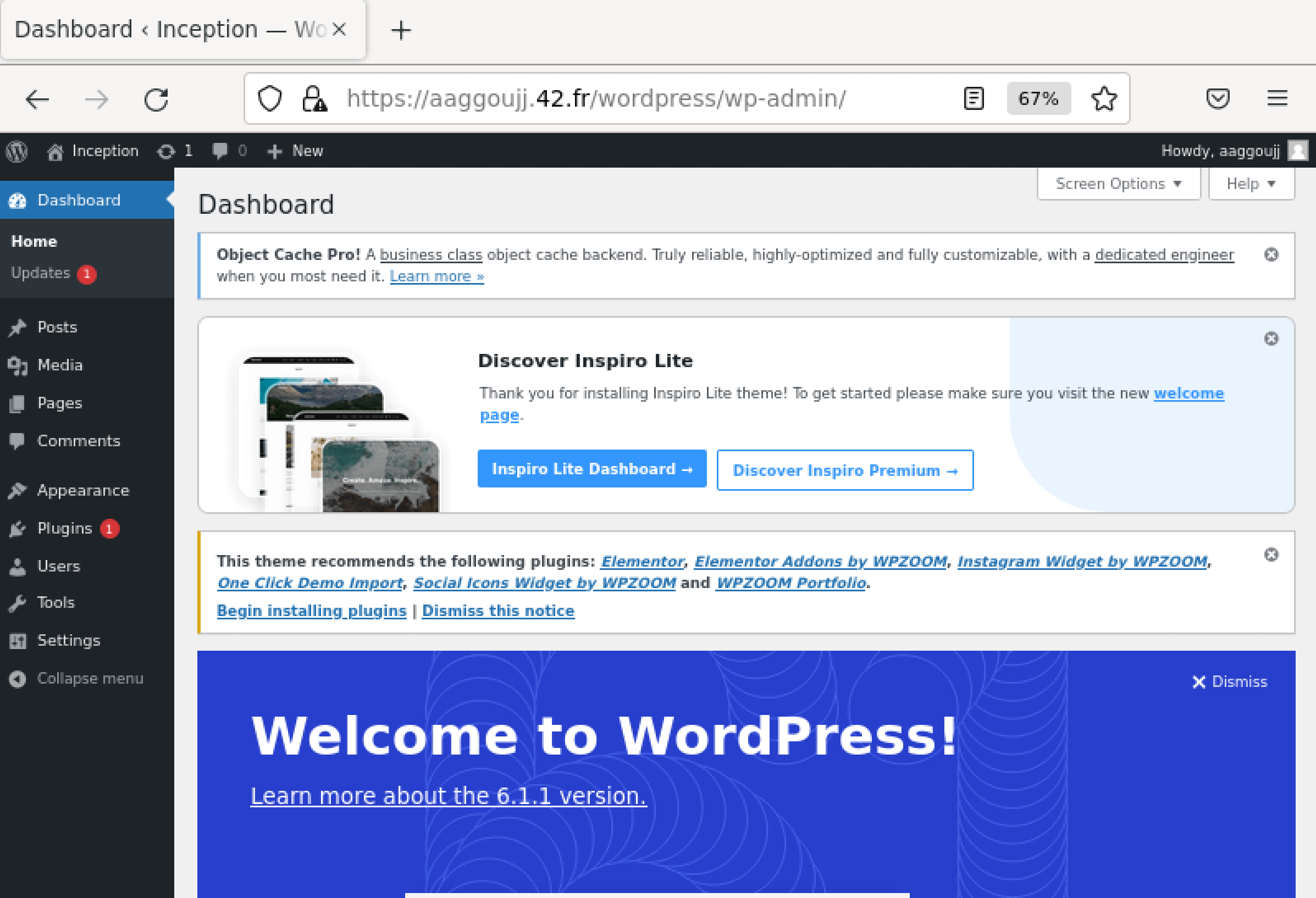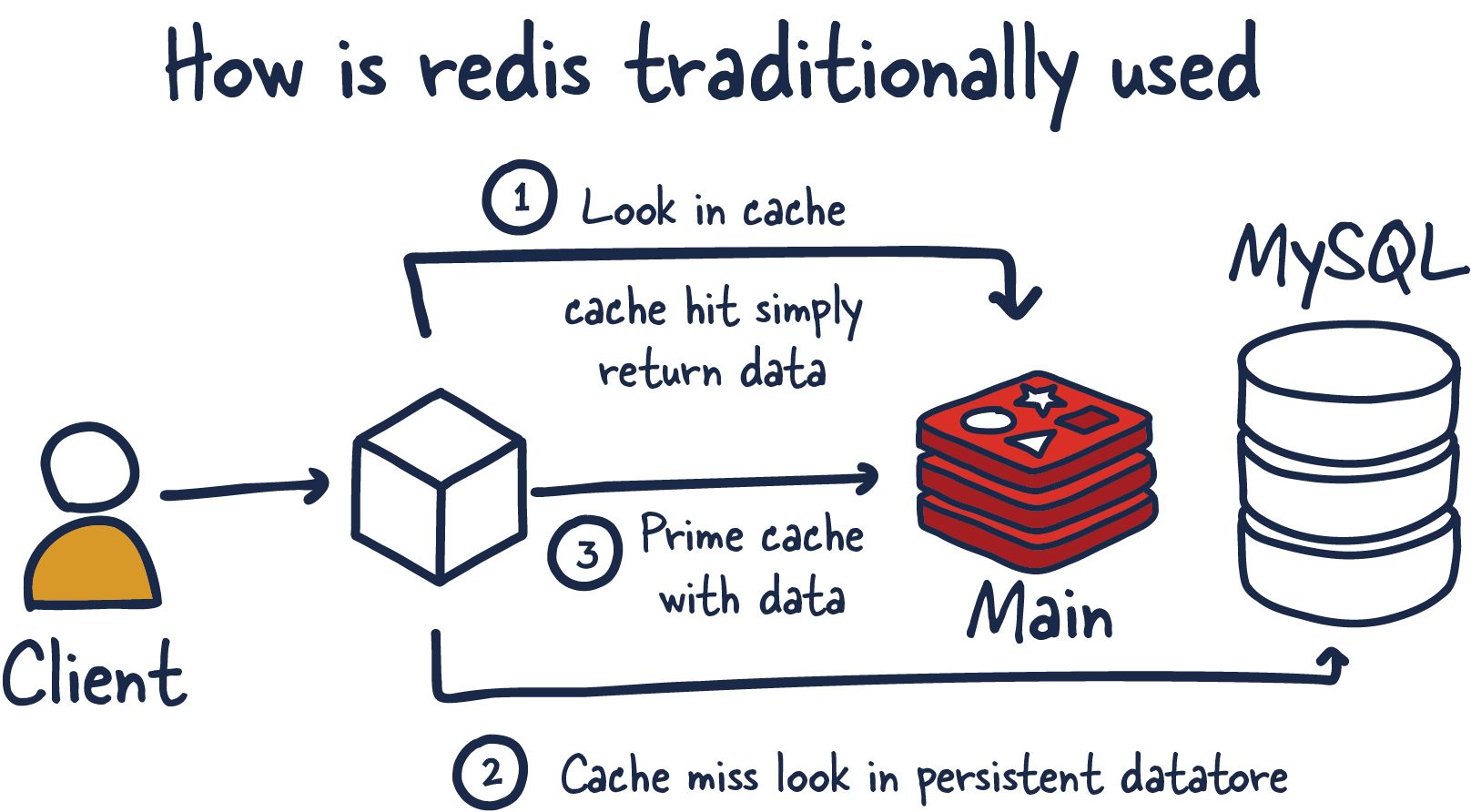This project is an introduction to Docker. It aims at setting up multiple services using Docker containers.
Docker is a software platform designed to help developers build, share, and run modern applications. It allows you to package your application and its dependencies into a standardized unit called a container, which can be easily shared and run on any machine that has Docker installed.
A container is a lightweight, standalone, executable package of software that includes everything needed to run an application. It consists of an entire runtime environment, including the application code, runtime, system tools, libraries, and settings. Containers are isolated from each other and from the host system, which makes them portable and easy to deploy across different environments.
The primary difference between containers and virtual machines is that containers provide a way to virtualize an OS so that the same code can run on any device, while virtual machines virtualize an entire machine down to the hardware layers. Containers are small, fast, and portable because they do not need to include a guest OS in every instance, while virtual machines require a full copy of the operating system for each instance.
- Each vm needs a. full-blown OS
- Slow to start
- Resource intensive
- Allow running multiple apps in isolation
- are lightweight process
- use OS of the host
- Start quickly
- Need less hardware resources
A Docker image is a read-only template that contains a set of instructions for creating a container that can run on the Docker platform. It provides a convenient way to package up applications and preconfigured server environments, which you can use for your own private use or share publicly with other Docker users.A Docker image includes everything needed to run an application, such as the application code, runtime, system tools, libraries, and settings.
Additional ressources:
Docker in 100 seconds.
Docker docs.
General docker commands:
docker ps # Show currently running containers
docker pull "NameOfTheImage" # pull an image from dockerhub.
docker rm <container_name> # Delete docker containers.
docker exec -it <container_name> "command" "arg1" "arg2" ... # Execute command in the container.
docker run <image_name> # Run the docker imageA Dockerfile is a text document that contains all the commands a user could call on the command line to assemble an image.
FROM debian:buster # Base image
WORKDIR /app
COPY src dest
RUN yarn install --production
CMD ["node", "src/index.js"]
EXPOSE 3000First, Docker Compose is a tool for defining and running multi-container Docker applications. It allows you to define the services that make up your application in a YAML file, which can then be used to start and stop all the containers at once.
The main difference between Docker and Docker Compose is that Docker is used to build, run, and manage individual containers, while Docker Compose is used to define and run multi-container applications.
version: "3.9"
services:
web:
build: . # Dockerfile Path
ports:
- "8000:5000"
redis:
image: "redis:alpine"Docker networking enables a user to link a Docker container to as many networks as he/she requires. Docker Networks are used to provide complete isolation for Docker containers.
Note: A user can add containers to more than one network.
Let’s move forward and look at the Advantages of networkin
- NGINX is open source software for web serving, reverse proxying, caching, load balancing, media streaming.
What is Deamon ?
In multitasking computer operating systems, a daemon is a computer program that runs as a background process, rather than being under the direct control of the user. It is typically started at boot time and runs continuously, waiting for requests to perform certain tasks or services. Daemons are often used to provide network services such as web servers, email servers, and file servers
For Dockerfile
FROM alpine:3.16.4
COPY ./conf/nginx.conf /etc/nginx/nginx.conf
COPY ./tools/script.sh /
RUN sh ../script.sh
EXPOSE 443
CMD ["nginx", "-g", "daemon off;"]in script i configurate Secure Sockets Layer or SSL, and the configuration of nginx i set up in nginx.conf file here i Full Example Configuration of them.
For configurate SSL we need to download openssl in your OS. but you have to know what's HTTP, HTTPS and what is an SSL Certificate?
You can create a self-signed key and certificate pair with OpenSSL in a single command:
sudo openssl req -x509 -nodes -days 365 -newkey rsa:2048 -keyout /etc/ssl/private/nginx-selfsigned.key -out /etc/ssl/certs/nginx-selfsigned.crtCommand explining Here
-openssl: This is the basic command line tool for creating and managing OpenSSL certificates, keys, and other files.
-req: This subcommand specifies that we want to use X.509 certificate signing request (CSR) management. The “X.509” is a public key infrastructure standard that SSL and TLS adheres to for its key and certificate management. We want to create a new X.509 cert, so we are using this subcommand.
-x509: This further modifies the previous subcommand by telling the utility that we want to make a self-signed certificate instead of generating a certificate signing request, as would normally happen.
-nodes: This tells OpenSSL to skip the option to secure our certificate with a passphrase. We need Nginx to be able to read the file, without user intervention, when the server starts up. A passphrase would prevent this from happening because we would have to enter it after every restart.
-days 365: This option sets the length of time that the certificate will be considered valid. We set it for one year here.
-newkey rsa:2048: This specifies that we want to generate a new certificate and a new key at the same time. We did not create the key that is required to sign the certificate in a previous step, so we need to create it along with the certificate. The rsa:2048 portion tells it to make an RSA key that is 2048 bits long.
-keyout: This line tells OpenSSL where to place the generated private key file that we are creating.
-out: This tells OpenSSL where to place the certificate that we are creating.
What is mariadb
The MariaDB and MySQL database management systems have a lot in common, which can make it difficult to choose when you need to decide on a database solution for your business. Both systems are fundamentally open source, relational databases . MariaDB is originally a spin-off or further development of the MySQL project, which is now fully managed by Oracle. Because Oracle holds the trademark rights to the name MySQL as of 2010, a new name for this database project was found in MariaDB.
What different between mysql and mariadb
MySQL offers a free open source community edition. However, if you need enterprise-level features, MySQL locks some of those features behind proprietary code. So for the full version of MySQL, companies must purchase an Enterprise Edition.
MariaDB offers all of its features in its open source package. Users can still pay for support services or for cloud implementations (enterprise licence), but a qualified team can use the best and core features of MariaDB completely free of charge.
Apart from how these two products handle their open source code base, MySQL and MariaDB also have other different salient features.
FROM alpine:3.16.4
RUN apk add --no-cache mariadb mariadb-client
COPY ./tools/script.sh /tmp/script.sh
COPY ./conf/my.cnf /etc/my.cnf
ENTRYPOINT [ "sh","/tmp/script.sh" ]in config file my.cnf i set two configuration for mysqld i set datadir = /var/lib/mysql
and i have to bind address for anyone bind-address = 0.0.0.0 in galera like this
[mysqld]
datadir=/var/lib/mysql
[galera]
bind-address=0.0.0.0next step is run this command mysql_install_db --user=mysql --datadir=/var/lib/mysql --skip-test-db its will install all dependance of mysql and skip test database.
Testing Mariadb with Following command
$> mariadb
...
MariaDB [(none)]> CREATE DATABASE IF NOT EXISTS usertest;
Query OK, 1 row affected (0.000 sec
MariaDB [(none)]> GRANT ALL PRIVILEGES ON usertest.* TO 'usertest'@'%' IDENTIFIED BY 'userpassword';
Query OK, 0 rows affected (0.002 sec)
MariaDB [(none)]> SHOW DATABASES;
+--------------------+
| Database |
+--------------------+
| usertest |
| information_schema |
| mysql |
| performance_schema |
| sys |
+--------------------+
5 rows in set (0.000 sec)
$>What is wordpress
WordPress is an open-source content management system (CMS) software used to build, modify, and maintain websites[1][2]. It is a popular CMS that is used for a wide variety of websites, from personal blogs to large e-commerce sites.For Install Wordpress you can use wp cli you might perform in the WordPress admin
wp core download --allow-root # Downloads core WordPress files.
wp config create # Generates a wp-config.php file. with flag --dbname, --dbuser...
wp core install # Runs the standard WordPress installation process.FROM alpine:3.16.4
# edit version of repositories in apk for download all dependences of php7
RUN sed -i "s/6/5/g" /etc/apk/repositories
RUN apk add --no-cache curl php7 php7-phar php7-tokenizer \
php7-common mariadb-client php7-session php7-iconv \
php7-json php7-gd php7-curl php7-xml php7-mysqli
# install wp cli
RUN curl -O "https://raw.githubusercontent.com/wp-cli/builds/gh-pages/phar/wp-cli.phar" \
&& chmod +x wp-cli.phar \
&& mv wp-cli.phar /usr/local/bin/wp
# creat system user
RUN adduser -S nginx && addgroup -S nginx
# configuration of php7
COPY ./conf/php-fpm.conf /etc/php7/
COPY ./tools/script.sh /tmp
ENTRYPOINT [ "sh","/tmp/script.sh"]
in scripte you will Downloads core WordPress file and generated wp-config file using wp command
and run php-fpm7 -F for runing php fastcgi process manager and force to stay in foreground and ignore daemonize option from configuration file.
page of wordpress example:
You can enter to admin page using path of wp-admin directory for example https://login.42.fr/wordpress/wp-admin
Redis Cache is an in-memory data store that can be used as a database, cache, streaming engine, and message broker. It provides an in-memory data store based on the Redis software and delivers sub-millisecond response times. Redis Cache is often used to speed up website page load time for users and improve the performance and scalability of applications that use backend data stores heavily.
for install plugin redis-cache using wp plugin install redis-cache --activate --allow-root
and for config redis you can set this configuration
wp config set "WP_REDIS_HOST" redis --allow-root
wp config set "WP_REDIS_PORT" 6379 --raw --allow-root
#reasonable connection and read + write
wp config set "WP_REDIS_TIMEOUT" 1 --raw --allow-root
wp config set "WP_REDIS_READ_TIMEOUT" 1 --raw --allow-root
wp config set "WP_REDIS_DATABASE" 0 --raw --allow-rootyou can find all rescources HERE.
Adminer is a free, open-source, web-based database management tool written in PHP. It is a full-featured database management system that allows users to manage databases easily. Adminer consists of a single file ready to deploy on your server and natively supports MySQL, MariaDB, PostgreSQL, SQLite, MS SQL, Oracle, Firebird, SimpleDB, Elasticsearch and MongoDB.
Dockerfile
FROM alpine:3.16.4
RUN sed -i "s/6/5/g" /etc/apk/repositories #change version of package APK
RUN apk add --no-cache curl php7 php7-mysqli php7-pdo_mysql
COPY ./tools/adminer-script.sh /tmp/adminer-script.sh
ENTRYPOINT [ "./tmp/adminer-script.sh" ]for setup adminer script
curl "https://github.com/vrana/adminer/releases/download/v4.8.1/adminer-4.8.1.php" --location -o index.php
# Downlaoding CSS file to change the default theme
curl "https://raw.githubusercontent.com/vrana/adminer/master/designs/mvt/adminer.css" --location -o adminer.css
php -S 0.0.0.0:80ressource of adminer HERE.
FTP stands for File Transfer Protocol, which is a standard communication protocol used for the transfer of computer files from a server to a client on a computer network. It is a way to download, upload, and transfer files from one location to another on the Internet and between computer systems. FTP is used to communicate and transfer files between computers on a TCP/IP (Transmission Control Protocol/Internet Protocol).
all configuration file you can found in this part of repository.
For more informaition about FTP click here
you can just create html file (css if you have) and place them in wordpress path /var/www/html as index.html
COPY ./tools/index.html /var/www/htmlso automatically after go website https://login.42.fr/ you can find them
I have choice two service first one is portainer, and game of chess.
Powerful container management for DevSecOps Deploy, configure, troubleshoot and secure containers in minutes on Kubernetes, Docker, Swarm and Nomad in any data center, cloud, network edge or IIOT device.
So you can mangement all images containers networks ..., using interface website.
I found this game project.
FROM alpine:3.16.4 AS clone
RUN apk add git
RUN git config --global advice.detachedHead false
RUN git clone https://github.com/Aveek-Saha/Online-Chess.git /app
WORKDIR /app
RUN git checkout 12f39e091aeb54432937eae46c8c03f80e8fcfb2
RUN rm -rf .git
FROM alpine:3.16.4
RUN apk add nodejs npm
COPY --from=clone /app /app
WORKDIR /app
RUN npm install
EXPOSE 8080
CMD ["node", "index.js"]Docker:
Mariadb:
Nginx:
redis & ftp:



